
Gold Belt Tour Back Country Byway

The route into Florence (south of US 50)

This route tours Cripple Creek, Victor, Wilbur, Adelaide, McCourt, Cañon City, Florence and other 1890's gold camps. The roads are narrow, very crooked and pretty rugged. The scenery is outstanding: from the top of Pikes Peak to the bottom of Royal Gorge with miles and miles of sheer rock faces and rugged high country in between. Along the way you will also pass Florissant Fossil Beds National Monument and Garden Park Dinosaur Fossil Area.
Different segments of the route have very different road conditions. High Park Road is paved and two-lane for its entire length, as is Teller County Route 1. However, Shelf Road and Phantom Canyon Road are both unpaved, highly twisted and very narrow for long stretches. Four-wheel drive is recommended and is actually required at times on both roads. Vehicles over 25 feet are not permitted on Phantom Canyon Road. Between the climbing area and Cripple Creek, Shelf Road is winding and very narrow with nasty drop-offs (don't even try this in anything longer than 25 feet - in the deep canyon area especially, you don't have a chance).

Along Shelf Road, Window Rock from the north
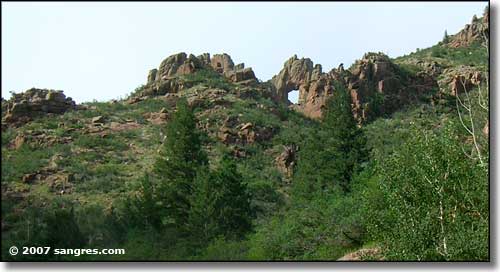
Window Rock from the south

Gold mine remnants in the Anaconda area
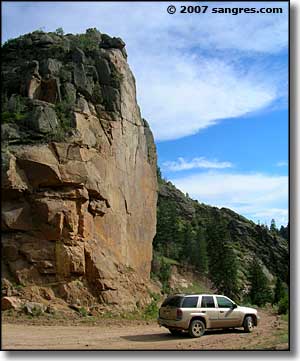
A small rockface along Shelf Road
For a road first built in 1892, Shelf Road was an engineering marvel (if you take this drive you'll understand why). Phantom Canyon Road was built shortly afterwards, connecting Florence to the mines. From 1894 to 1912, railroad cars filled with gold ore rolled down Phantom Canyon feeding up to nine processing mills running day and night in Florence (if you take this drive you'll wonder how they got railroad tracks and cars through here - you might even wonder how they found this route in the first place).
It was 1890 when Bob Womack made the gold strike that started the Cripple Creek Gold Rush. Since that time, more than 500 mines in the Cripple Creek and Victor Mining District have produced over 21 million ounces of gold - more than the Alaska and California Gold Rushes put together. Gold is still being produced in the District, although a lot of it is generated by the limited stakes gambling in Cripple Creek.
For many years the beauty of the area was overshadowed by the search for gold but that's pretty much finished now. These days a lot of folks travel the byway to get to places like the Shelf Road Climbing Area, Red Canyon Park, the Garden Park Fossil Area, and the Florissant Fossil Beds National Monument. There's also areas just to the east like Skaguay Reservoir, Beaver Creek State Wildlife Area and the 27,000 acres of the Beaver Creek Wilderness Study Area (BLM) and its miles of hiking and horseback riding trails.
In late July, 2007, I took a drive north up the Phantom Canyon Road to Victor and Cripple Creek, then came back to Anaconda and made the turn onto Shelf Road and came back down into Cañon City before heading for home. To say that what I found along the way was a very pleasant surprise is quite the understatement: I took a lot of photos along the way but there is no way that I could fit the wonder and grandeur of that countryside into any camera. The experience was so profound that I almost became jaded to it: just when I thought I had reached my limit to take in more, the scenery would completely change. And that drive through the deep canyon area on Shelf Road is only for those who truly enjoy white-knuckle driving.

At Anaconda, looking uphill at the modern mine tailings
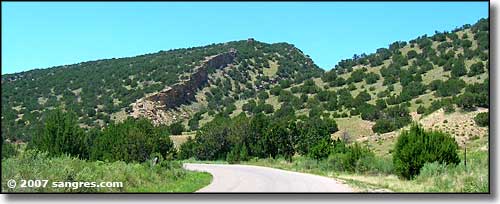
At the south end of Phantom Canyon Road
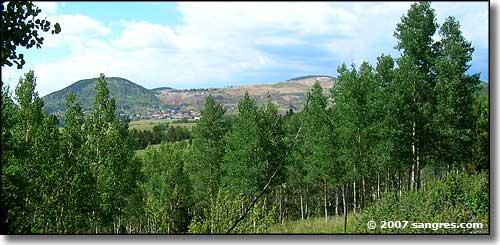
There's Victor, at the north end of Phantom Canyon Road
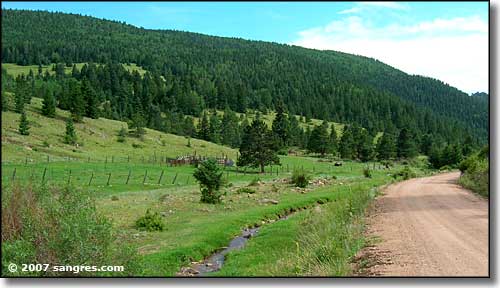
At the north end of Shelf Road
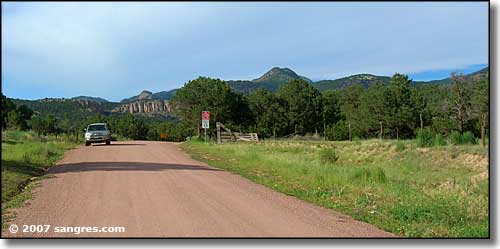
Looking back at the south end of Shelf Road
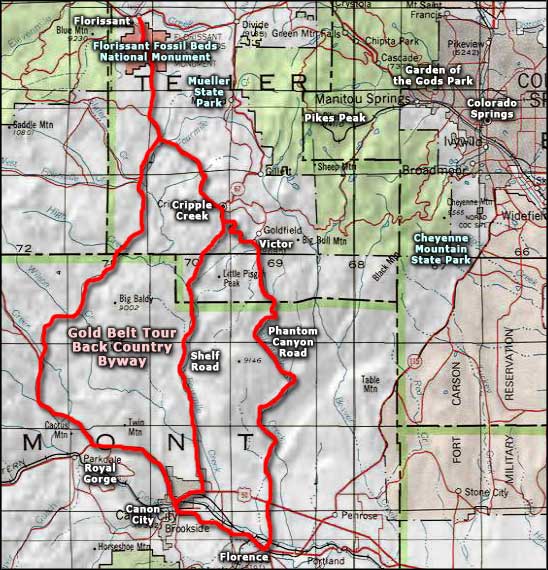
Gold Belt Tour Back Country Byway area map
